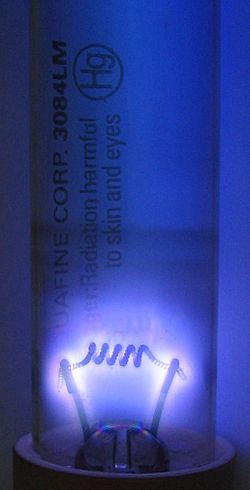Gas discharge lamp

Gas discharge lamps are a family of artificial light sources (or lamps). These lamps produce light by sending electricity through an ionized gas. Most of these lamps use a noble gas (usually argon or neon gas), or a combination of noble gases, but they often contain other materials, such as mercury, sodium or metal halides. The gases in these lamps are ionized in operation. This means that there are free electrons. When an electric current is sent through the gas, electrons collide with atoms of the gas and the metals. This will mean that some reach a higher energy state. When they fall back into the lower energy state, they will emit the energy in the form of light.
The fluorescent lamp is probably the best known gas discharge lamp. Sodium vapor lamps are commonplace as streetlights.
Gas-discharge lamps have a long life and a high efficiency, but they are more complicated to manufacture, which makes them more expensive to buy than incandescent lamps. Due to their greater efficiency, gas-discharge lamps replacing incandescent light bulbs for many purposes in the late 20th century. Early in the 21st century, light-emitting diodes improved, with even higher efficiency. They began to replace some gas discharge lamps.
